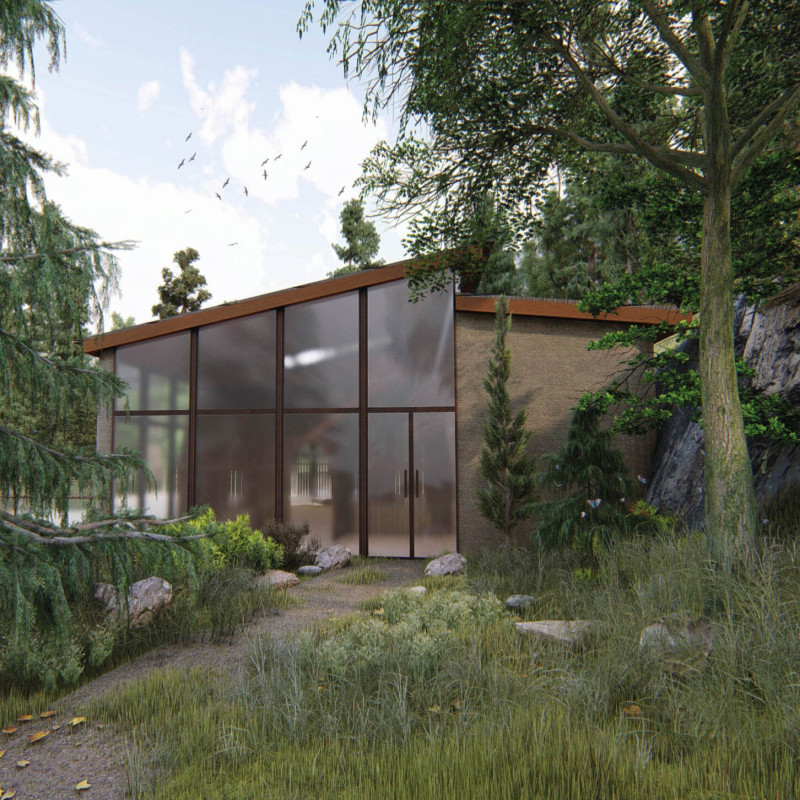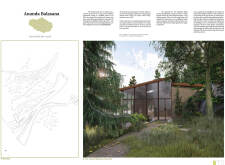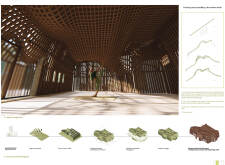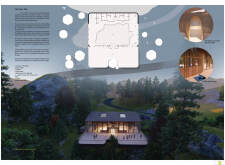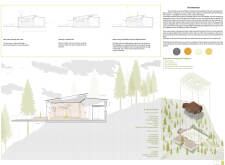5 key facts about this project
Ananda Balasana is set against the backdrop of central Portugal's mountains and is designed to be a place for yoga practice with a focus on relieving stress. The name, derived from the happy baby pose, embodies the mission of nurturing one’s inner self. The design aims to marry traditional architectural features, such as a timber roof, with modern principles to create a calm environment for meditation and reflection.
Exterior Design
The exterior features a timber roof that reflects the local architectural style, allowing the building to connect with its natural environment. This choice honors the region's cultural heritage while also inviting curiosity. The simplicity of the facade encourages visitors to explore the richness of the interior spaces.
Interior Layout
At the core of Ananda Balasana is the main yoga room, designed to maximize natural light and promote interaction among users. This centrally located room not only serves its primary purpose but also enhances communal experiences within the building. Surrounding rooms are thoughtfully arranged to allow easy access to spaces like the kitchen and terrace, supporting both individual practice and community engagement.
Sustainability Features
Several features contribute to the sustainable nature of Ananda Balasana. Windows on both the facade and roof can be opened to encourage natural airflow and maintain comfortable temperatures inside. The building also includes a rainwater collection system that utilizes precipitation for irrigation in the garden, which reflects an understanding of ecological responsibility.
Material Palette
The choice of materials is vital to creating a welcoming atmosphere. Timber dominates the roof and facade, offering warmth and comfort. Milky glass windows diffuse sunlight effectively, creating a cozy environment while preventing glare. Concrete is used only where structural support is needed, allowing lighter materials to create a soothing and inviting interior.
The terrace and garden enhance the experience by providing unobstructed views of the surrounding mountains. These outdoor areas encourage users to engage with nature, reinforcing the connection between the indoor and outdoor environments. This thoughtful approach enriches the overall design, allowing moments of reflection and quiet observation to thrive.


